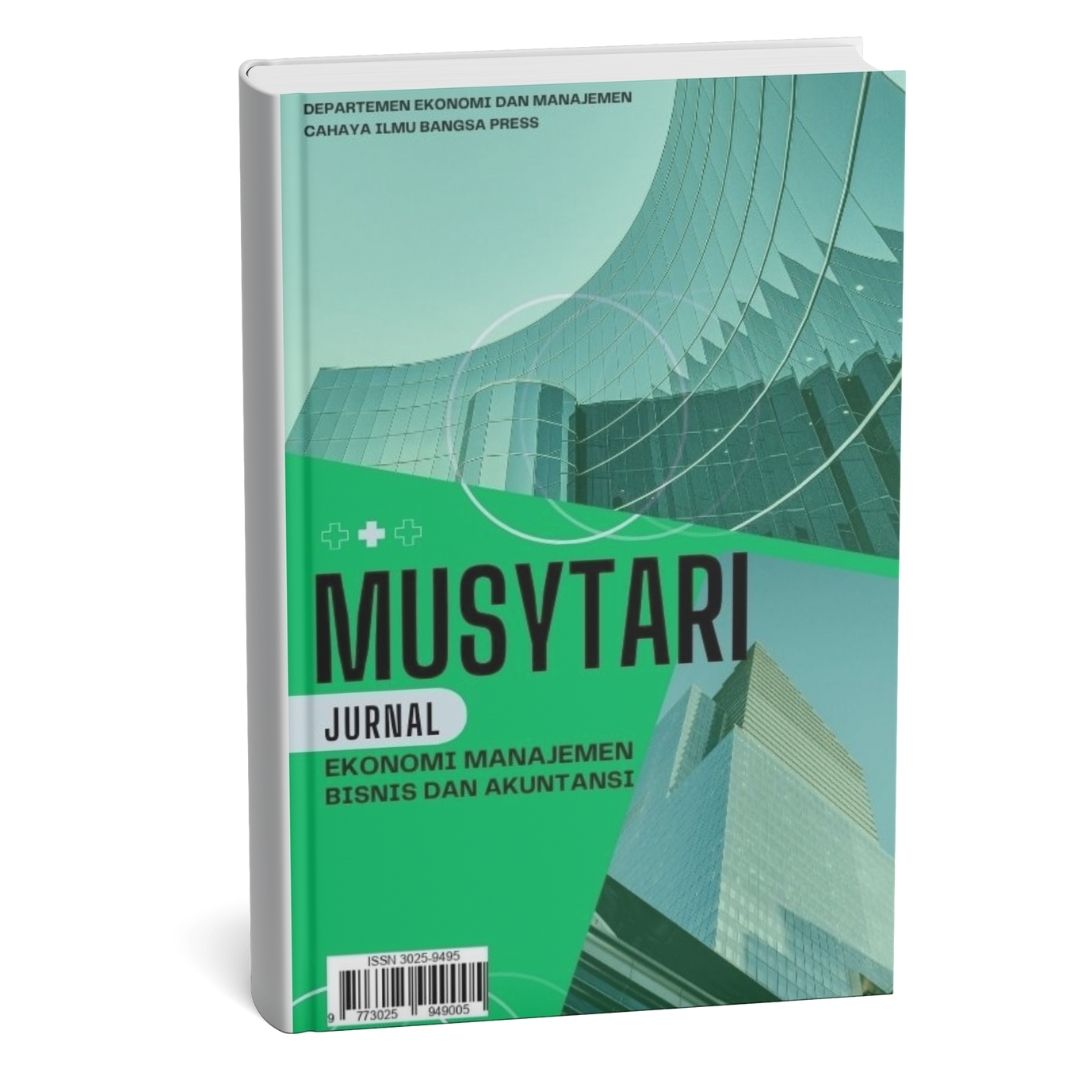Published 2025-07-06
Keywords
- Push-Pull-Mooring, Digital Banking, Service Switching, Switching Intention, Push Factor,
- Push-Pull-Mooring, Digital Banking, Perpindahan Layanan, Niat Berpindah, Faktor Pendorong
How to Cite
Abstract
This research aims to analyze the factors influencing consumers' intention to switch to digital banking services in Indonesia using the Push-Pull-Mooring (PPM) model approach. The model explains how push, pull, and mooring factors interact to influence consumers' decisions to switch services. Push factors such as perceived risk, mooring factors such as habit and switching cost, and pull factors such as alternative attractiveness and perceived usefulness were found to play a significant role in influencing switching intention. This study uses a quantitative method with a survey approach, where data is collected through questionnaires distributed to users of digital banking services in Indonesia. The data analysis technique used is multiple linear regression analysis to test the impact of these factors on switching intention. The results show that perceived risk and alternative attractiveness have a significant positive impact on switching intention, while habit and switching cost serve as barriers that reduce the intention to switch. These findings provide insights to digital banking service providers about the factors that need to be considered when designing strategies to enhance customer retention and attract new customers. Recommendations for service providers include improving security, convenience, and the attractiveness of alternative services to minimize the negative impact of hindering factors.
Penelitian ini menganalisis faktor-faktor yang mempengaruhi niat konsumen beralih ke layanan digital banking di Indonesia dengan pendekatan model Push-Pull-Mooring (PPM). Faktor-faktor seperti perceived risk (push), habit dan switching cost (mooring), serta alternative attractiveness dan perceived usefulness (pull) ditemukan berpengaruh signifikan terhadap niat berpindah. Menggunakan metode kuantitatif dengan survei dan analisis regresi linier berganda, hasil penelitian menunjukkan bahwa perceived risk dan alternative attractiveness memiliki pengaruh positif, sementara habit dan switching cost berfungsi sebagai hambatan. Temuan ini memberi wawasan bagi penyedia layanan untuk meningkatkan keamanan dan daya tarik alternatif guna mengurangi hambatan berpindah.
References
- [1] Abikari, M. (2024). Emotions, perceived risk and intentions to adopt emerging e-banking technology amongst educated young consumers. International Journal of Bank Marketing, 42(5), 1036–1058. https://doi.org/10.1108/IJBM-01-2023-0004.
- [2] Alkhowaiter, W. A. (2020). Digital payment and banking adoption research in Gulf countries: A systematic literature review. International Journal of Information Management, 53(February), 102102. https://doi.org/10.1016/j.ijinfomgt.2020.102102.
- [3] Almaiah, M. A., Al-Otaibi, S., Shishakly, R., Hassan, L., Lutfi, A., Alrawad, M., Qatawneh, M., & Alghanam, O. A. (2023). Investigating the Role of Perceived Risk, Perceived Security and Perceived Trust on Smart m-Banking Application Using SEM. Sustainability (Switzerland), 15(13), 1–17. https://doi.org/10.3390/su15139908.
- [4] Anggraeni, R., Hapsari, R., & Muslim, N. A. (2021). Examining Factors Influencing Consumers Intention and Usage of Digital Banking: Evidence from Indonesian Digital Banking Customers. Asia Pacific Management and Business Application, 009(03), 193–210. https://doi.org/10.21776/ub.apmba.2021.009.03.1.
- [5] Bank Indonesia. (2025). TINJAUAN KEBIJAKAN MONETER MARET 2025. In Bank Indonesia (Issue November).
- [6] Bansal, H. S., Taylor, S. F., & James, Y. S. (2005). “Migrating” to new service providers: Toward a unifying framework of consumers’ switching behaviors. Journal of the Academy of Marketing Science, 33(1), 96–115. https://doi.org/10.1177/0092070304267928.
- [7] Jo, H., & Bang, Y. (2024). Switching Intent in Smart Factories: Understanding Key Influencers. SAGE Open, 14(3), 1–21. https://doi.org/10.1177/21582440241281912.
- [8] Kaur, S., & Arora, S. (2021). Role of perceived risk in online banking and its impact on behavioral intention: trust as a moderator. Journal of Asia Business Studies, 15(1), 1–30. https://doi.org/10.1108/JABS-08-2019-0252.
- [9] Kumar, R., Singh, R., Kumar, K., Khan, S., & Corvello, V. (2023). How Does Perceived Risk and Trust Affect Mobile Banking Adoption? Empirical Evidence from India. Sustainability (Switzerland), 15(5), 1–21. https://doi.org/10.3390/su15054053.
- [10] Marx, T. (2024). The push-pull-mooring model of consumer service switching: a meta-analytical review to guide future research. Journal of Service Theory and Practice, 35(7), 1–29. https://doi.org/10.1108/JSTP-06-2024-0201.
- [11] Moon, B. (1995). Paradigms in migration research: Exploring ‘moorings’ as a schema. Progress in Human Geography, 19(4), 504–524. https://doi.org/10.1177/030913259501900404.
- [12] Network, F. N., & Rowena, A. (2025). Top Digital Banks in Asia, According to The Banker (2025).
- [13] Ngau, C. M., Zins, A. H., & Rengasamy, D. (2023). Why do bank customers switch? A systematic literature review. International Journal of Bank Marketing, 41(6), 1308–1329. https://doi.org/10.1108/IJBM-10-2021-0475.
- [14] Otoritas Jasa Keuangan. (2025). Siaran Pers: Stabilitas Sektor Jasa Keuangan Terjaga di Tengah Dinamika Perekonomian Global.
- [15] Park, J., Yoo, J. W., Cho, Y., & Park, H. (2024). Understanding switching intentions between traditional banks and Internet-only banks among Generation X and Generation Z. International Journal of Bank Marketing, 42(5), 1114–1141. https://doi.org/10.1108/IJBM-06-2023-0338.
- [16] Sharng Vision. (2025). Sharing Vision IT Business Outlook 2025.
- [17] Hsieh, P. J. (2021). Understanding medical consumers’ intentions to switch from cash payment to medical mobile payment: A perspective of technology migration. Technological Forecasting and Social Change, 173(August), 121074. https://doi.org/10.1016/j.techfore.2021.121074.

